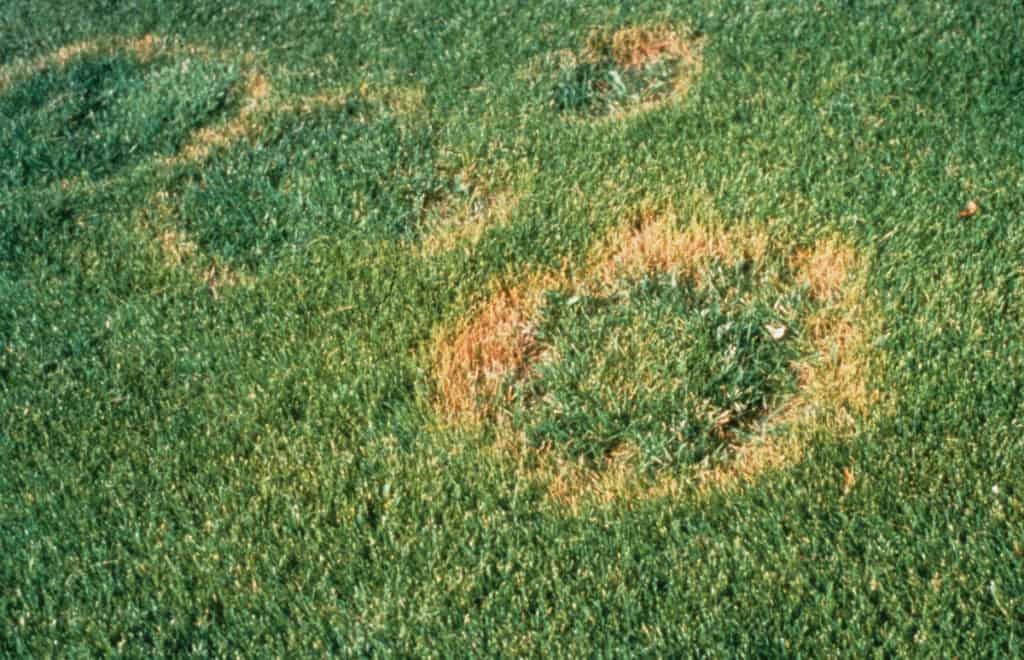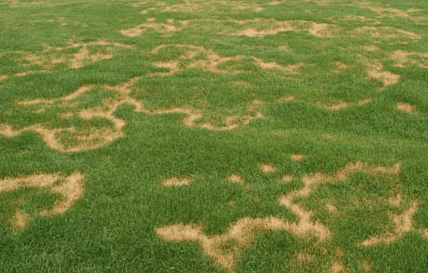Summer Lawn Diseases: Necrotic Ring Spot
Necrotic Ring Spot is a common turf damaging disease of bluegrass lawns across the northern United States. While this root-destroying disease infects grass roots in the spring, symptoms do not typically become evident until the hot summer months. To identify NRS, look for a ‘frog-eye’ shaped circle in the lawn. In the center of the browned-out circle, a green ‘eye’ appears. As the disease progresses, circles grow in size and can coalesce or come together.
NRS is primarily a Kentucky Bluegrass problem. Turf-Type Tall Fescue and Ryegrass are not affected.
The disease is most active on well-watered or regularly irrigated lawns, where roots are constantly moist. It is especially active in the greater Denver area where most lawns are irrigated.

Necrotic Ring Spot Disease. Courtesy of UMass.
Managing NRS is difficult. While “over-the-counter” fungicides are available, only licensed lawn care applicators have access to the most effective materials. Even using the very best products, application rate and timing are critical. A professional service will make an initial treatment in the late Spring, when soil temperatures at a depth of two inches reaches 65 degrees. A second and possibly a third application, approximately 28 days apart are also required. And, while the lawn should recover in Fall, the disease is likely to re-appear next season.
For more information on Necrotic Ring Spot, click here
Join Our Free Lawn Care Newsletter
Stay Up to Date With The Latest News & Updates
* We don’t share your info with anyone ever.


